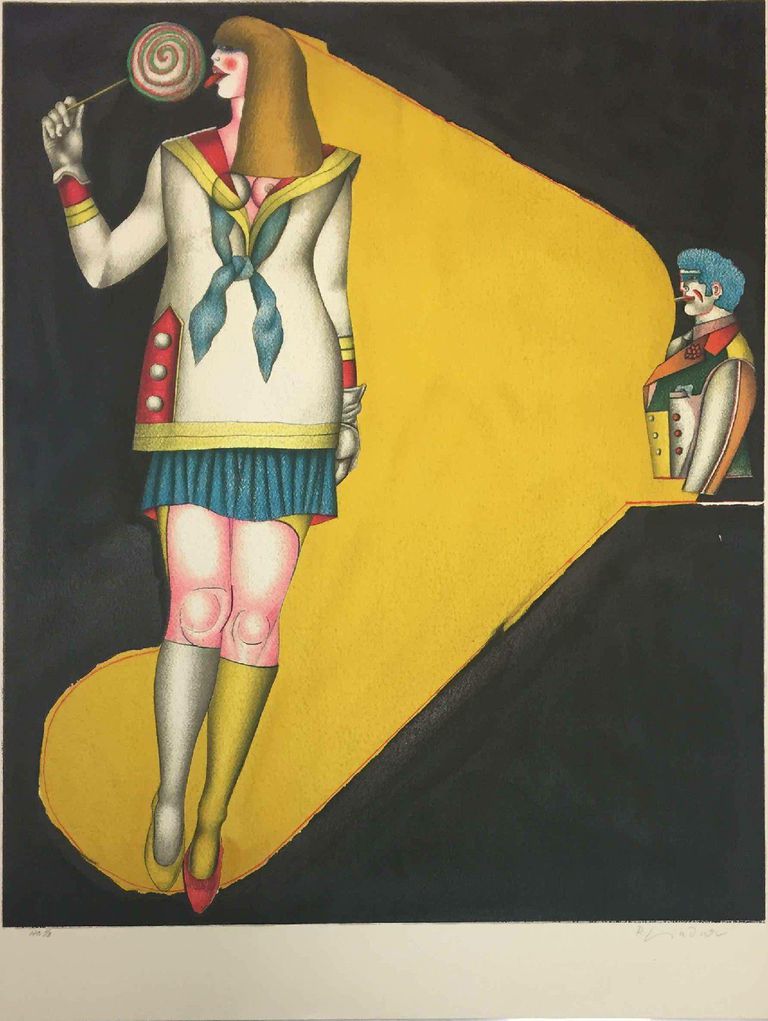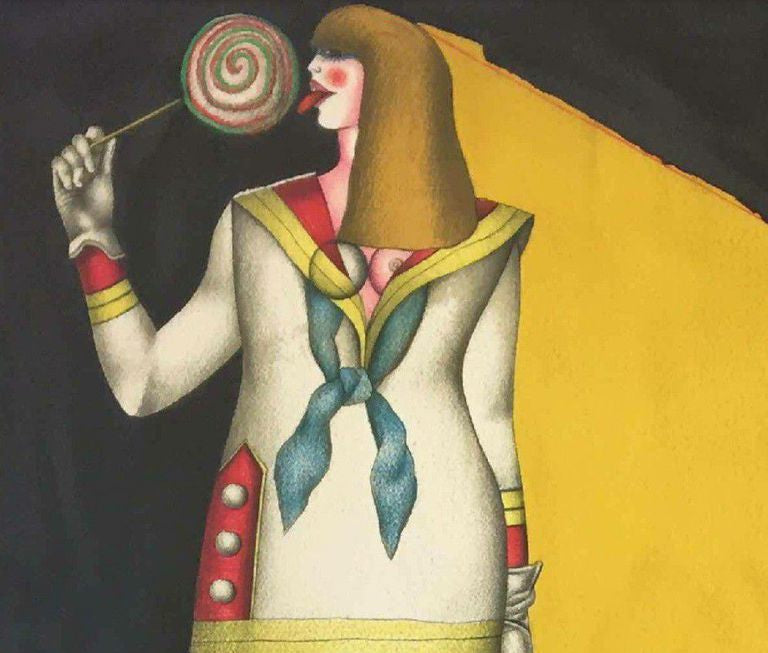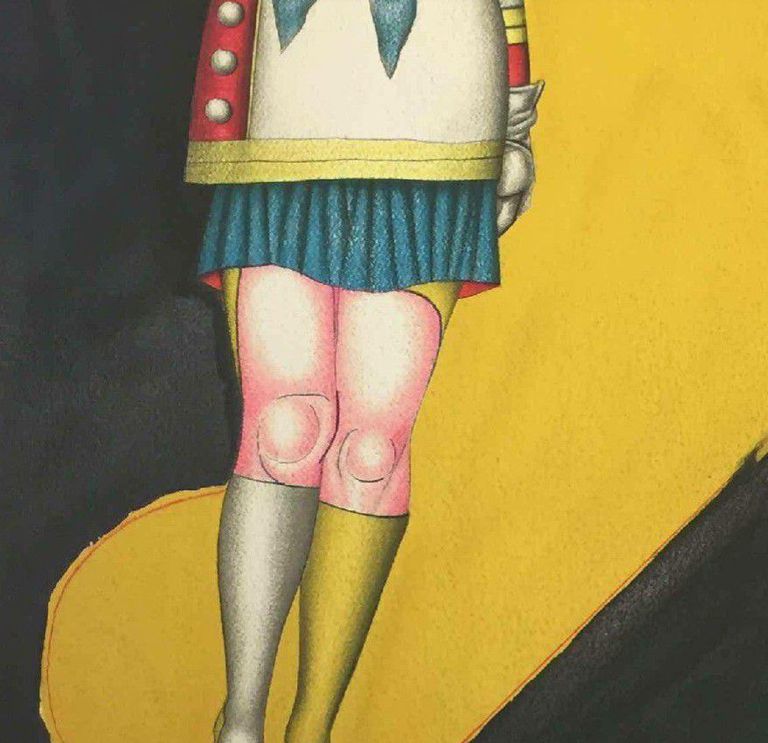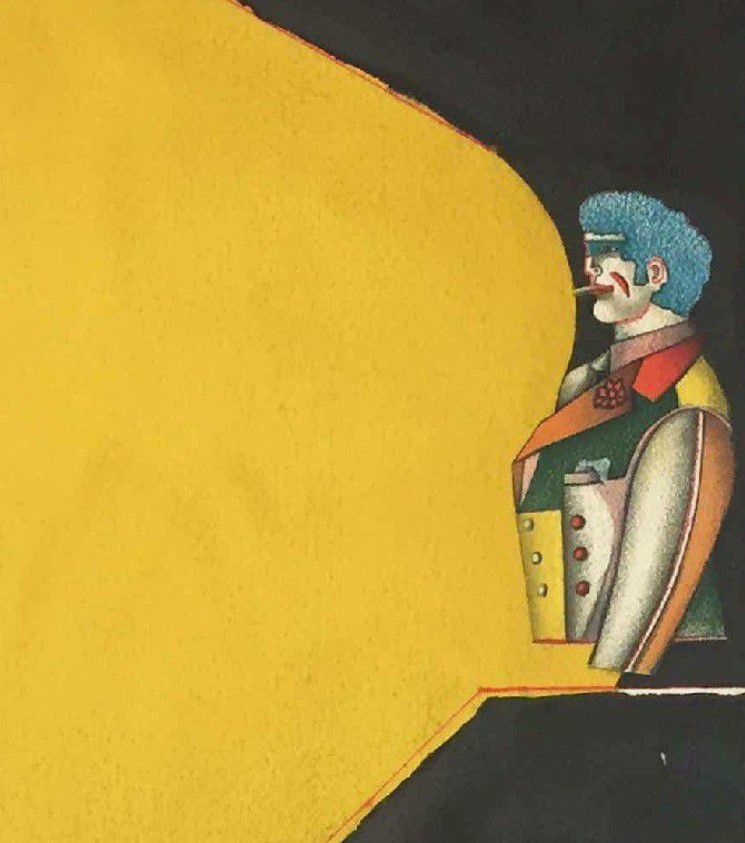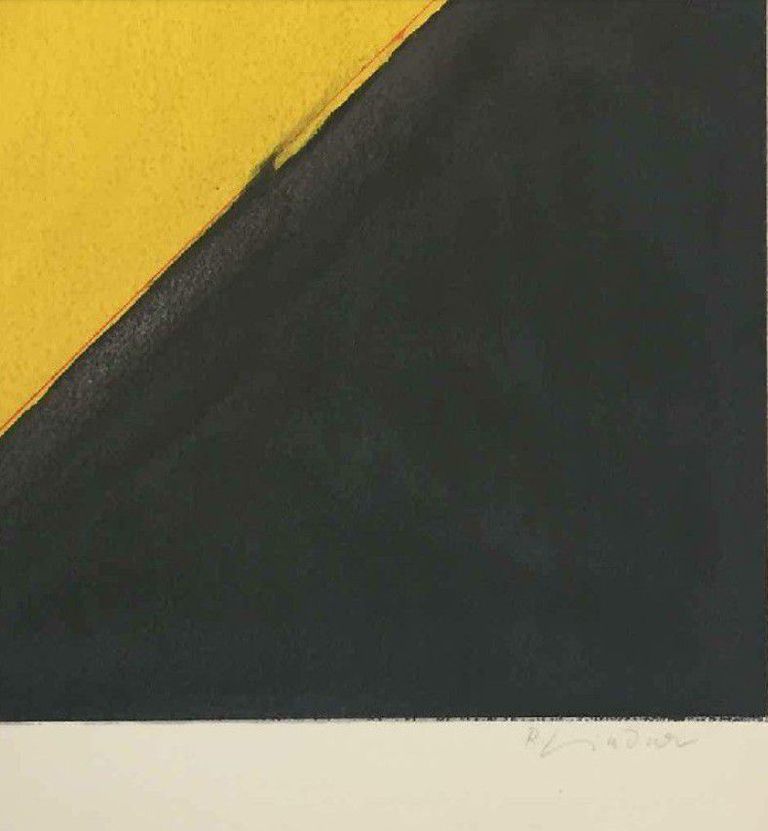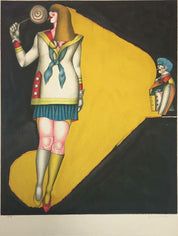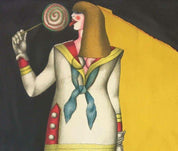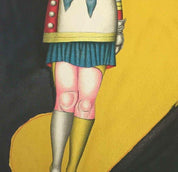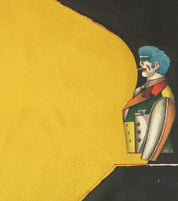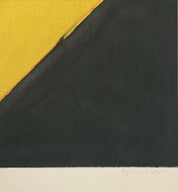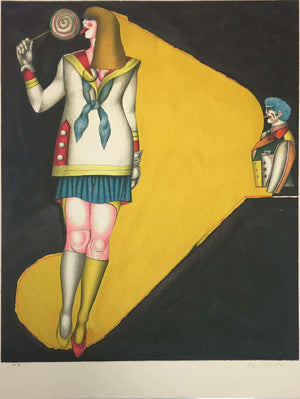Limited Edition Lithograph Print "Lollipop" by Richard Lindner
Richard Lindner
Artwork Details
Artwork Description
Artist: Richard Lindner
Title: Lollipop
Year: 1971
Dimensions: 26 1/2 in. by 20 1/4 in.
Edition: From the Rare Limited Hors Commerce Edition
Publisher: Shorewood Publishers Inc. New York
Suite: Fun City
Medium: Lithograph on Paper
Condition: Excellent
Step into the vibrant world of Richard Lindner with "Lollipop," a lithograph that encapsulates the playful spirit of his artistry.
Created in 1971, this piece measures 26 1/2 inches by 20 1/4 inches, inviting you to immerse yourself in the intricate details of Lindner's portrayal. The dimensions provide ample space to engage with the artwork's dynamic composition.
Part of the rare limited Hors Commerce edition, this print holds a place of distinction among collectors and art enthusiasts. It is part of the "Fun City" suite, offering a glimpse into Lindner's exploration of urban life and its quirks.
Published by Shorewood Publishers Inc. in New York, the artwork carries Lindner's legacy of innovative expression. The lithograph medium adds vibrancy and texture to the piece, enhancing the nuances of Lindner's unique style.
The "excellent" condition report ensures that the artwork remains well-preserved and ready to adorn your space. The piece captures a moment of whimsy and invites you to explore Lindner's artistic vision.
Experience the playful energy of Richard Lindner's 'Lollipop,' a lithograph that captures the essence of urban whimsy. Elevate your collection with this captivating artwork that captures Lindner's artistic legacy. Secure your connection to the master's vision and the timeless world of artistic expression by placing your bid today.
Richard Lindner (November 11, 1901 – April 16, 1978) was a German-American painter.
Biography
Richard Lindner's headstone
Richard Lindner was born in Hamburg, Germany. His mother Mina Lindner was American and born in New York as daughter of German parents.
In 1905 the family moved to Nuremberg, where Lindner's mother was owner of a custom-fitting corset business and Richard Lindner grew up and studied at the Kunstgewerbeschule (Arts and Crafts School), now the Academy of Fine Arts Nuremberg. From 1924 to 1927 he lived in Munich and studied there from 1925 at the Kunstakademie. In 1927 Lindner moved to Berlin and stayed there until 1928, when he returned to Munich to become art director of a publishing firm. He remained in Munich until 1933, when he was forced to flee to Paris. Once in Paris, Lindner became politically engaged, sought contact with French artists and earned his living as a commercial artist. He was interned when World War II broke out in 1939 and later served in the French Army.
In 1941, Lindner moved to the United States and worked in New York City as an illustrator of books and magazines. There he made contact with New York artists and German emigrants such as Albert Einstein, Marlene Dietrich, and Saul Steinberg. In 1948, Lindner became an American citizen.
In 1952, Lindner started teaching at the Pratt Institute, Brooklyn. In 1957 Lindner received the William and Norma Copley Foundation-Award. In 1965, he became Guest Professor at the Hochschule für bildende Künste in Hamburg, Germany. His paintings at this time used the sexual symbolism of advertising and investigated definitions of gender roles in the media. In 1967, Lindner moved to Yale University School of Art and Architecture, New Haven.
Richard Lindner died in 1978. He was buried at Westchester Hills Cemetery in Hastings-on-Hudson, New York.
Art
"The artistic universe of Richard Lindner is unique: he is highly genuine, he is full of urban energy, and he is driven by weird eroticism...Richard Lindner started his career as an artist eventually at the age of 40 in New York. In this metropolitan jungle Lindner created his oeuvre: exciting and powerful images of robot like figures, amazons and heroines, harlequins of self-styled heroes - his artistic panorama of the unruly 60s and 70s of the 20th century" (sic) (Claus Clement quoted in: Richard Lindner - Paintings, Works on Paper, Graphic - Nuremberg 2001). One of Lindner's paintings, "Boy With Machine," 1954, appears on the cover-leaf of Deleuze's Anti-Oedipus, and thus the image has formed part of many readers' introduction to Deleuze's later and more accessible philosophy.

